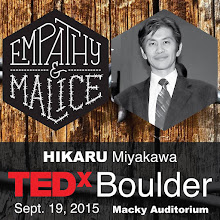[Exercises for cultivating the Imagination]
"Imagination is more important than knowledge." - Albert Einstein
What is imagination?
When you open up Wiki, it states that imagination "is the ability of forming mental images, sensations and concepts, in a moment when they are not perceived through sight, hearing or other senses. Imagination is the work of the mind that helps create fantasy. Imagination helps provide meaning to experience and understanding to knowledge; it is a fundamental facility through which people make sense of the world, and it also plays a key role in the learning process." (http://en.wikipedia.org/wiki/Imagination)
One needs not to be an artist to use imagination. As a matter of fact, we all have the faculty to imagine. When we daydream, we use imagination. The parents can imagine the smile of their children while they are shopping for the birthday gifts. The children are wonderful at imagining the special friends, places, heroes and heroins...
When we read books, especially the theatrical works and dramas, we hear the character "speaking" within our mind. Hamlet may have a certain voice. A little prince may have completely different one from Alice.
In the world of art, during the 20th century, we have encountered many artworks with rich in imagination. Franz Marc had painted the animals with the colors not usually seen in the natural world. Cubists tried to paint the pictures having multiple view points at once. ...so on and so forth.
One of the exercises I have introduced to my students at the Waldorf/Steiner high schools was derived from the special exercises used especially in the lower-middle school level called, the Form Drawing/Formenzeichnen.
One of the basic exercises of the form drawing is to do with the mirror image. One would draw a certain curved "line" on one side of the paper and try to draw the mirror imaged shape of the same "line" on the other side. The form drawing can become very complex, certainly cultivates the imagination of the children.
Nowadays, we can download a image converter software and, with a click, one can flip the image either vertically or horizontally. The exercises I have developed would let our mind use our imagination instead of the software to do the same (eventually).
One can expand this visual imagination exercise to the even more complex one... to imagine what others may be feeling and thinking "without projecting ourselves onto the others". In other words, we have the faculty to objectively observe the reality and also to be in someone's shoe, so to speak. We can shift our view points and see the world with the different eyes and from the different view points.
We know of the great mural of "The Last Supper" of Leonardo da Vinci. One thing is to ponder about the identities and the gender of the disciples, but to me, we would be doing much more service to the humanity when and if we can use our imaginative faculty to imagine what each disciple is seeing in such traumatic environment. What is James' visual field? What is he seeing? What is Judas seeing? ...etc...
What are human beings seeing every moment?
How are the others seeing us?
...something to ponder about...
Friday, July 2, 2010
Subscribe to:
Post Comments (Atom)



This blog really speaks to me, Hikaru! Yes, a rich and active imagination often serves us in the ways we relate to others humans! A good imagination, as I experience it, is a broad mind that embraces alternative perspectives, as you mention. It is not rigid, it is fluid, and it considers all angles of vision as possibilities of experience. I appreciate your exercise to mentally entertain what each person sitting at the table in the famous "The last Super" painting, is seeing and perhaps feeling. This is an empathic view, in my opinion, in which the viewer can separate him, or herself, enough from the work of art to truly absorb everything the piece of art has to offer. When we approach life without preconceived expectations of what is before us, we open our eyes to new vistas! The imagination is a most valuable faculty that definitely allows such new perspectives to thrive. Speaking as someone who has always been told she has a very rich imagination, I can certainly attest to how valuable I have found it in my life. My imagination has been one of my best friends. It has certainly broadened the way I see and experience art, other humans, and the world in general. It has opened me to connecting more deeply. It has injected greater meaning into what I see. The imagination takes us beyond the surface and into the deeper regions of existence. I couldn't agree with you more, dear Hikaru! Thank you for this blog entry, and may we all practice exercises to cultivate our imagination....for, I believe, it has no limit! :)
ReplyDelete